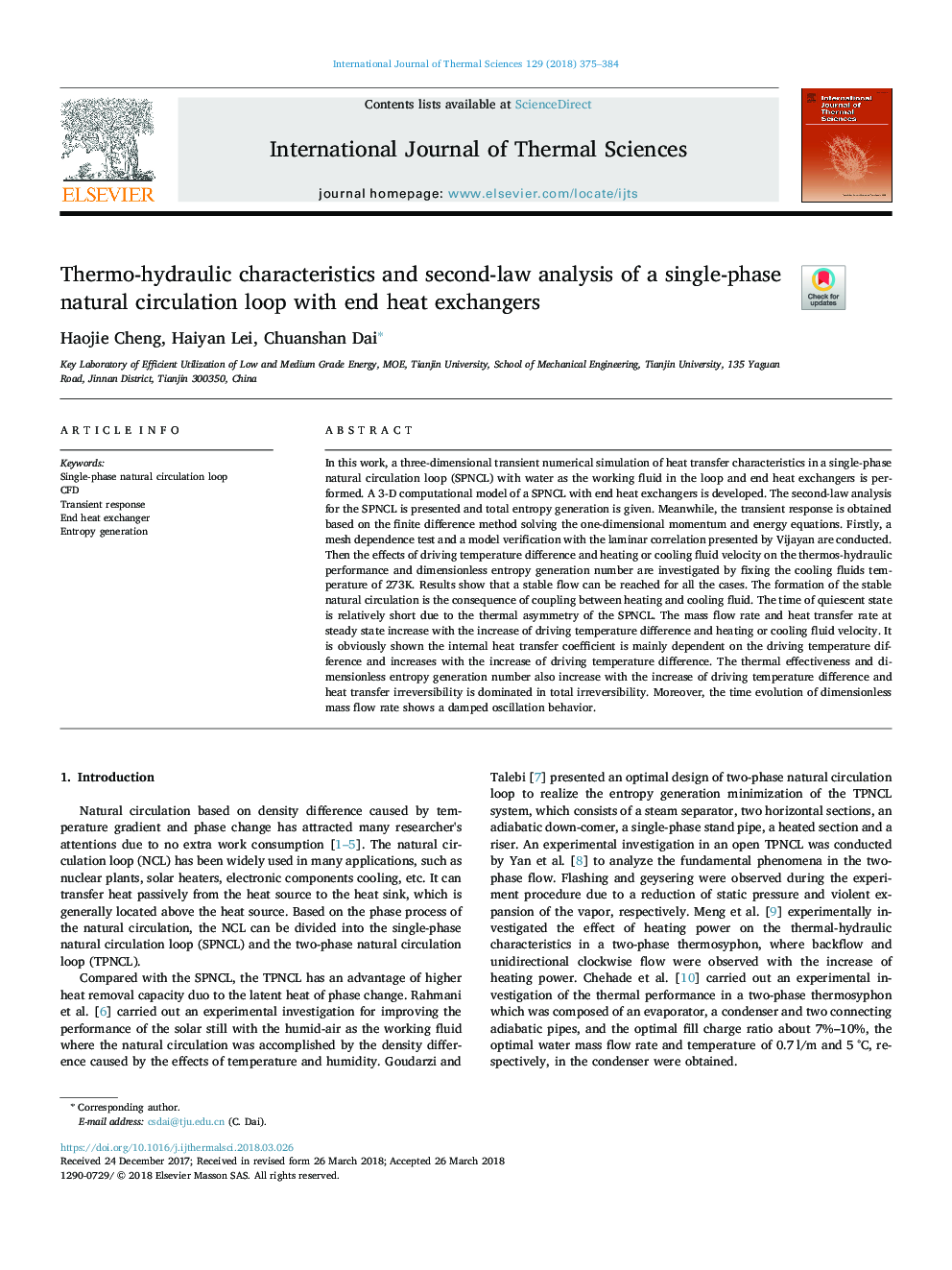| Article ID | Journal | Published Year | Pages | File Type |
|---|---|---|---|---|
| 7060727 | International Journal of Thermal Sciences | 2018 | 10 Pages |
Abstract
In this work, a three-dimensional transient numerical simulation of heat transfer characteristics in a single-phase natural circulation loop (SPNCL) with water as the working fluid in the loop and end heat exchangers is performed. A 3-D computational model of a SPNCL with end heat exchangers is developed. The second-law analysis for the SPNCL is presented and total entropy generation is given. Meanwhile, the transient response is obtained based on the finite difference method solving the one-dimensional momentum and energy equations. Firstly, a mesh dependence test and a model verification with the laminar correlation presented by Vijayan are conducted. Then the effects of driving temperature difference and heating or cooling fluid velocity on the thermos-hydraulic performance and dimensionless entropy generation number are investigated by fixing the cooling fluids temperature of 273K. Results show that a stable flow can be reached for all the cases. The formation of the stable natural circulation is the consequence of coupling between heating and cooling fluid. The time of quiescent state is relatively short due to the thermal asymmetry of the SPNCL. The mass flow rate and heat transfer rate at steady state increase with the increase of driving temperature difference and heating or cooling fluid velocity. It is obviously shown the internal heat transfer coefficient is mainly dependent on the driving temperature difference and increases with the increase of driving temperature difference. The thermal effectiveness and dimensionless entropy generation number also increase with the increase of driving temperature difference and heat transfer irreversibility is dominated in total irreversibility. Moreover, the time evolution of dimensionless mass flow rate shows a damped oscillation behavior.
Related Topics
Physical Sciences and Engineering
Chemical Engineering
Fluid Flow and Transfer Processes
Authors
Haojie Cheng, Haiyan Lei, Chuanshan Dai,
